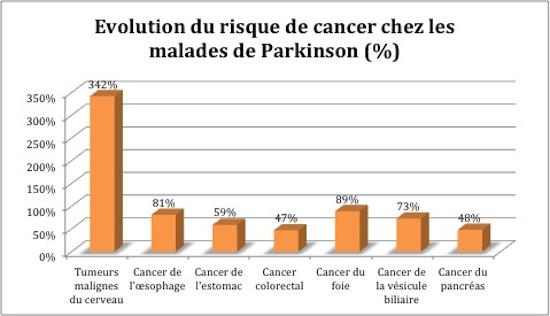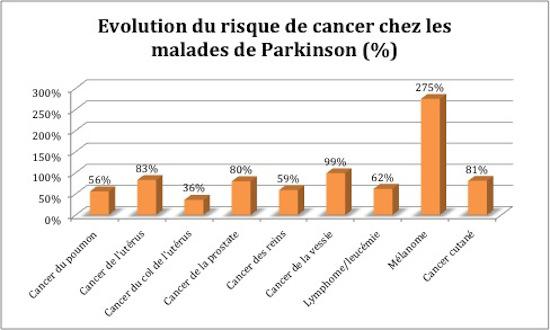People in Taiwan with Parkinson’s disease are two to three times more at risk of certain cancers, especially hormone-dependent or lung cancers.
-1434969064.jpg)
Parkinson’s disease is associated with several types of cancer. A study in Taiwan reviewed the risk of developing a tumor in patients with this neurodegenerative disease compared to the general population. The results, published in the JAMA Oncology, show a strong link with 16 different locations.
People with Parkinson’s are three times more likely than the general population to develop a malignant brain tumor. A strong association that is also found in melanoma, where the probability is increased by 2.75 times … even though this form of cancer is relatively rare in the country. However, having Parkinson’s disease does not increase or reduce the risk of developing breast, ovarian or thyroid cancer. This is what emerges from the study, which compared the health of 62,000 Taiwanese diagnosed with Parkinson’s disease between 2004 and 2010, and that of 124,000 control subjects.


Source : JAMA Oncology
The influence of ethnicity
“Based on this national study on the association between Parkinson’s disease and cancer risk, we conclude that Parkinson’s disease is a risk factor in most cancers in Taiwan,” the researchers write in conclusion. . They recognize that some risk factors, such as tobacco, may have been underestimated. In an editorial associated with the study, Mary Ganguli and Michael Lotze, from the University of Pittsburgh (Pennsylvania, United States) recall that the association is extremely complex. Environmental exposure and family risk factors must be taken into account. The two diseases are also linked to aging, which would explain the strength of the link.
But these results are contrary to what many studies conducted over the past 50 years have established. The majority of them suggest a reduction in risk in people with the disease. The authors of the latest publication point out a major limitation: all this work was carried out with Western populations. Despite some weaknesses, these results therefore highlight the influence of ethnicity and the environment on the onset of a disease. Other studies, on different Asian populations, are therefore to be expected.
.















